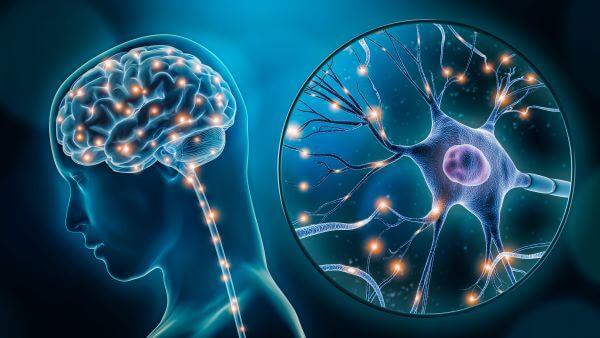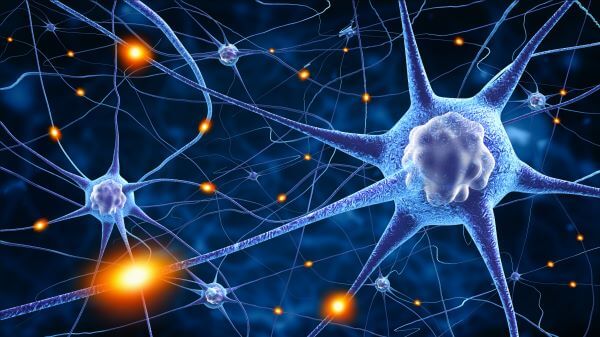Nerve cells (AKA neurons) are the basic functional units of the nervous system, and the adult human brain is thought to contain around 86 billion of them. The role of a nerve cell is to receive information from cells and transmit this information to other cells. There are three different types of nerve cells in the human body and, together, they detect and interpret information about our external environment before triggering responses to these stimuli. In doing so, they allow us to perceive and interact with the world around us.

What is the Nervous System?
The nervous system is a complex network of nerve cells that allows us to communicate and interact with the world around us. It collects information about our environment through our senses, processes that information, and then stimulates a bodily response. Nerve cells play a vital role in the functioning of the nervous system, as they receive and transmit messages between the brain, spinal cord, and other parts of the body. For example, if you touch something hot, your nerve cells will send a pain signal to your brain. Almost immediately, the brain processes this information and sends a message back that triggers you to snatch your hand away.

The nervous system can be divided into two key components; the Central Nervous System (CNS) and the Peripheral Nervous System (PNS). The CNS consists of the brain and spinal cord and controls virtually every function of our bodies and minds, including our movements, thoughts, emotions, desires, hormonal fluctuations, breathing, heart rate, and more.
The PNS is made up of nerves that branch off from the spinal cord and extend to all other parts of the body. They relay sensory information to the CNS for interpretation and regulate the responses to these stimuli, such as sweating, muscle movement, changes in blood pressure, and so on.
What is a Nerve Cell?

Nerve cells (AKA neurons) are the basic functional units of the nervous system. Put simply, their job is to receive information from cells, and then pass on this information to other cells. Messages carried by neurons are transmitted in the form of electrical signals (called nerve impulses) which travel from the body to the brain and back again. In this way, nerve cells relay information about your external environment (known as stimuli) to the brain for interpretation and trigger responses to those stimuli.
Anatomy of a Nerve Cell
A nerve cell is made up of three main parts; the cell body, the dendrites, and the axon.
Cell body
The cell body (AKA the soma) of the neuron contains the cell’s nucleus, which controls the activities of the cell. It also contains specialized organelles for protein and energy production.
Dendrites
Dendrites are extensions that branch off the cell body. They receive chemical signals from other neurons, which they convert to electrical impulses and transmit to the cell body.
Axon
The axon is a long extension that carries information away from the cell body. Many axons are covered in myelin, which is an insulating layer that allows nerve impulses to be rapidly conducted along the length of the axon. The endpoints of the axon are called the axon terminals. This is where information leaves the nerve cell and is passed on to target cells.
Different Types of Nerve Cells
There are three different types of nerve cells in the human body. These are sensory neurons, motor neurons, and interneurons.

Sensory Neurons
The role of sensory neurons is to detect stimuli (such as heat, sound, pressure, or light) in the external environment. They then transmit this sensory information to the rest of the nervous system for processing. For example, if a dog barks at you, your sensory neurons will fire off signals to let your brain know there is a threat nearby.
Motor Neurons
Motor neurons of the spinal cord are part of the CNS and extend throughout the body to connect with muscles, glands, and organs. Lower motor neurons transmit nerve impulses from the spinal cord to the muscles and control all of our muscle movements. Upper motor neurons travel between the brain and spinal cord.
Motor neurons are responsible for relaying commands from the brain to the muscles, glands, and organs. They facilitate your responses to stimuli. For example, if a dog growls and barks at you, your motor neurons will transmit signals to your muscles and cause you to jump back.

Interneurons
Interneurons are only found in the CNS, and their role is to connect one nerve cell to another. They receive nerve impulses from other interneurons or sensory neurons before transmitting this information to either motor neurons or interneurons.
They may relay information about external stimuli from the sensory neurons to the brain, or from the brain to the motor neurons to trigger a response.

